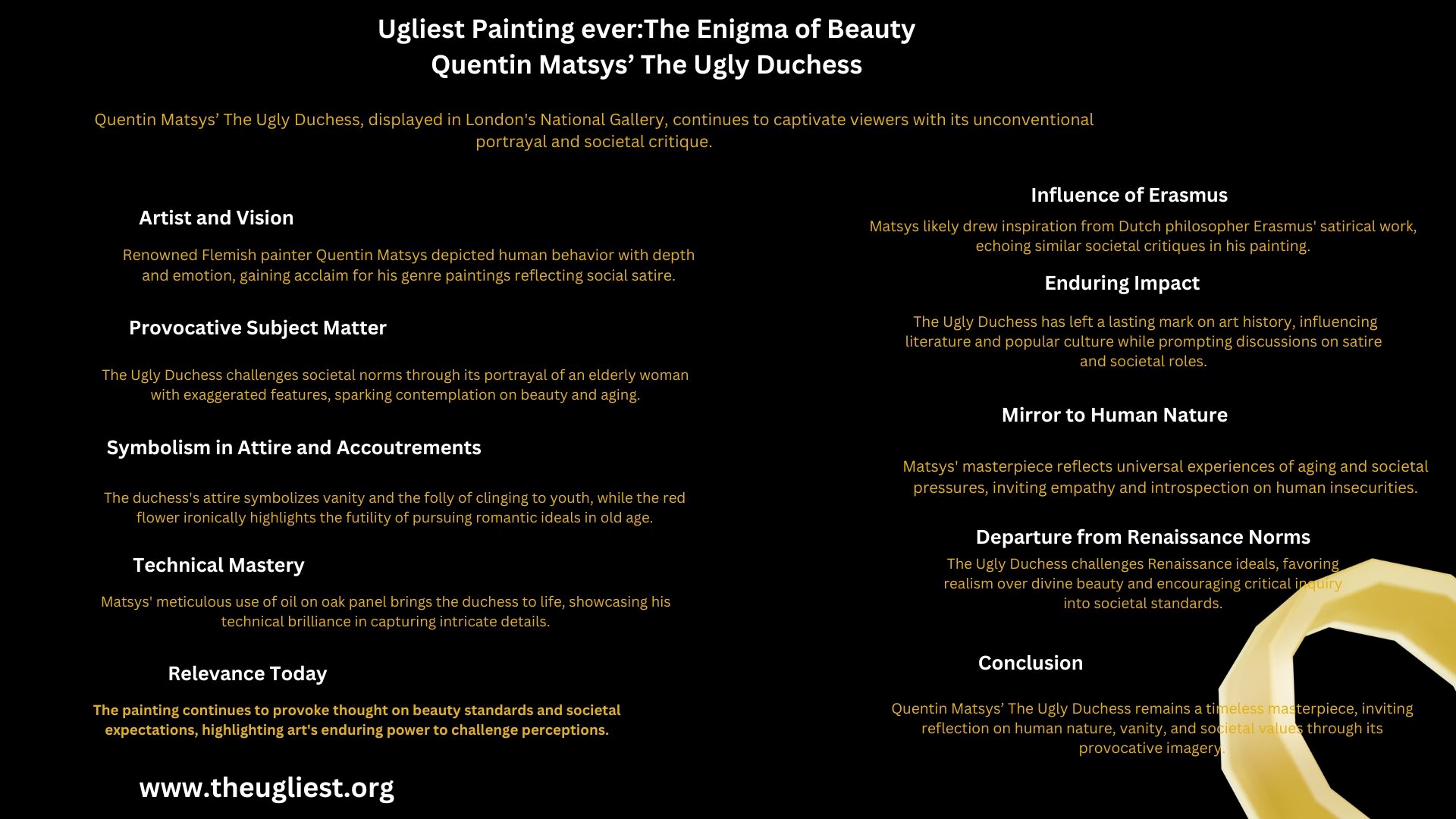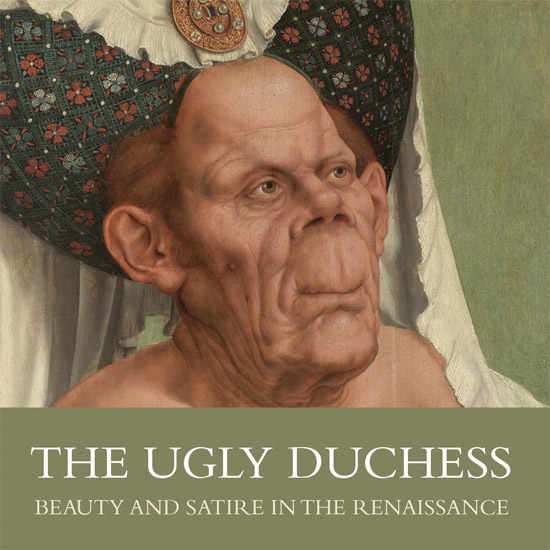Ugliest Painting Ever is Quentin Matsys’ The Ugly Duchess.
In the esteemed galleries of London’s National Gallery, amidst a collection of Renaissance artworks.
Hangs a painting that continues to captivate, perplex, and fascinate viewers even after five centuries.
Quentin Matsys’ The Ugly Duchess also known as A Grotesque Old Woman defies the norms of its time.
It gives a deep talk about how society expects people to act and what life is like for humans.

The Artist and his Vision
Quentin Matsys (1466–1530), a Flemish painter, was renowned for his intricate and often moralizing works.
His artistry revealed a keen insight into human behavior, portraying subjects with depth and emotion.
While he explored religious themes, Matsys gained equal acclaim for his genre paintings, which reflected the social norms and satirical currents of his era.
The Provocative Subject Matter
The Ugly Duchess shows an old lady with exaggerated features.
She has a big nose, thin lips, and loose skin, and she wears a horned hat while holding a red flower, which stands for engagement.
But there’s more to it than just a picture Matsys uses it to criticize society in general.
Challenging Perceptions of Beauty and Aging
The portrait prompts viewers to reconsider their notions of beauty and aging.
In the 16th century, much like today, society fixated on youth and physical attractiveness.
Matsys’ rendition of the duchess, with her natural signs of aging.
Serves as a satirical commentary on the vanity and superficiality often associated with beauty standards.
It encourages contemplation on the true essence of beauty beyond surface appearances.
Symbolism in Attire and Accoutrements
The duchess’s choice of attire, including the outmoded horned headdress.
Underscore’s themes of vanity and the folly of clinging to youthful trappings.
The red flower, typically a symbol of love and betrothal, takes on an ironic twist in the hands of the aged duchess.
Suggesting the futility of pursuing romantic ideals in the face of inevitable aging.
Influence of Erasmus
It’s widely believed that Matsys’ painting drew inspiration from the writings of Dutch philosopher Erasmus.
Particularly his satirical work In Praise of Folly.
Like Erasmus talked about society, Matsys shows the same idea in his painting.
Enduring Impact
The Ugly Duchess has left an enduring mark on art history.
Not only for its technical brilliance but also for its lasting relevance.
It has inspired literary and theatrical works, influencing characters in popular culture like Lewis Carroll’s Duchess in Alice’s Adventures in Wonderland.
Beyond the art world, it prompts discussions on satire and the role of art in society.
A Mirror to Human Nature
At its core, Matsys’ masterpiece serves as a mirror to human nature, capturing the universal experience of aging and societal pressures.
The duchess becomes a reflection of our own insecurities and vanities.
Inviting empathy and introspection on our attitudes towards aging and beauty.
Technical Mastery
Matsys’ use of oil on oak panel enables intricate detailing and texture, bringing the duchess to life.
The small wrinkles on her old skin, the shine on her headpiece, and the soft petals of the red flower are painted very carefully.
Making the artwork feel real.
Also Read: Ugliest Video Game Characters: The Designs That Shocked Players
A Departure from Renaissance Norms
The Ugly Duchess stands out amidst the idealized portraits of the Renaissance.
Opting to portray imperfections and reality rather than divine beauty.
It serves as a reminder that the Renaissance was a period not only of idealism but also of critical inquiry.
Relevance Today
Even now, The Ugly Duchess still makes people think about beauty, getting older, and what society expects.
It shows how art can make people think differently and question what they believe.
Conclusion
Quentin Matsys’ The Ugly Duchess is timeless.
It makes us think about being human, being vain, and the funny side of things.
When we look at it, we start thinking about our own lives and what’s important in society.
